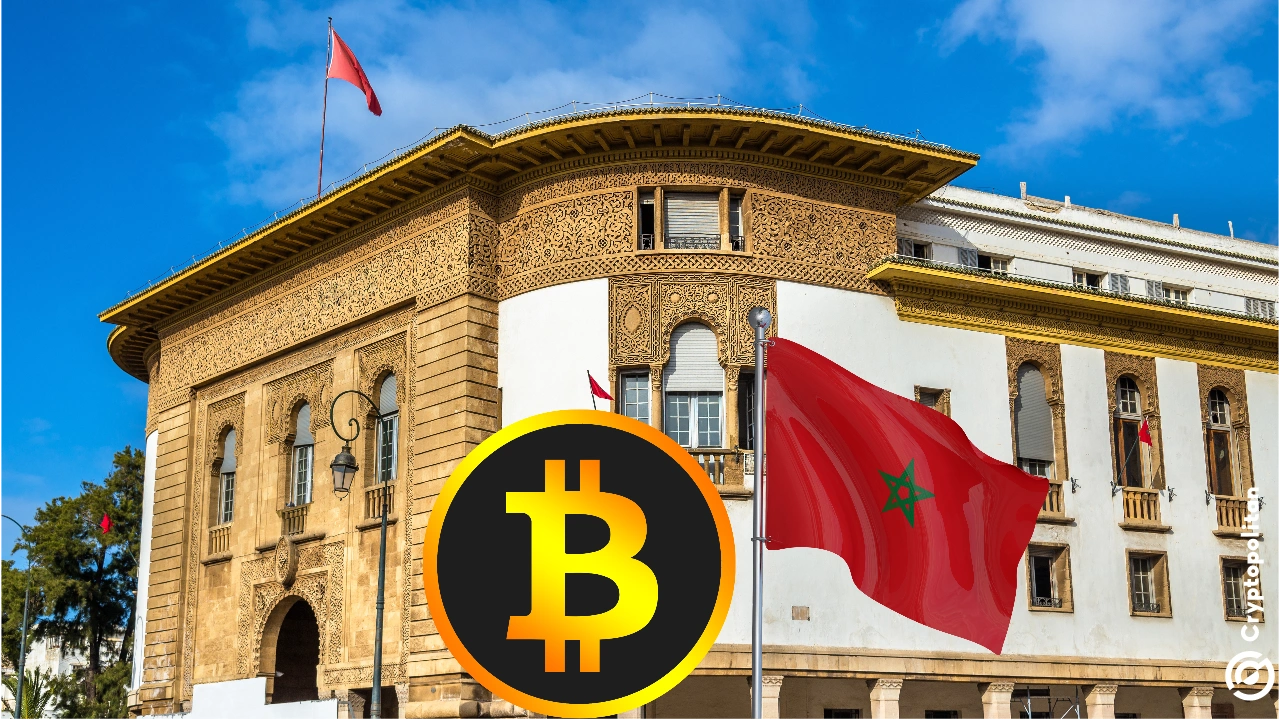Morocco’s Central Bank governor, Abdellatif Jouahri announced on November 26 that the digital asset/crypto regulation law has been prepared and is in the adoption phase.
The Central Bank of Morocco, known as Bank Al-Maghrib, has been working for the past two years on a digital asset/crypto regulation in collaboration with the IMF and World Bank.
While crypto regulation has been indefinite in Morocco for many years, crypto adoption in the country is one of the highest in Africa and the MENA region. It also one fastest growing stats globally.
Morocco ranked 20th globally in crypto regulation
Per Chainalysis’ Geography of Cryptocurrency report for the Middle East and North Africa (MENA) region in 2024, Morocco ranked 20th worldwide for crypto adoption. In addition, Morocco received the highest crypto transaction value of MENA’s African bloc. The metric compared it to Algeria, Egypt, Libya, Morocco and Tunisia.
As Chainalysis noted in its report, “MENA includes two countries ranked in the top 30 of the global crypto adoption indexes: Türkiye (11th) and Morocco (27th), capturing $137 billion and $12.7 billion of value received, respectively.”
Moroccan Central Bank governor discusses crypto assets regulation and CBDC
During the High-Level Regional Symposium on Financial Stability, Jouahri noted, “Bank Al-Maghrib has prepared, with the participation of all stakeholders and with the support of the World Bank, a draft law governing crypto assets which is currently in the adoption process.”
He explained that Morocco faced the challenge of crypto assets since 2017, while trying to raise awareness among the public. He added that the Moroccan authorities favored a regulatory approach aimed at ensuring adequate protection of users and investors while preserving opportunities to benefit from these innovations.
Talal Tabaa, Founder and CEO of the CoinMENA crypto exchange, commented on this news, stating, “It is completely logical to see virtual asset regulations being rolled out by governments, as it has become evident that Bitcoin and crypto are already a key part of the financial markets. Governments have a lot to gain by regulating the sector as well as a lot to risk if they get left behind.”
He then discussed CBDC (Central Bank Digital Currency), noting that Morocco is seeking to determine the extent this new form of money could contribute to the achievement of certain public policy objectives, particularly in terms of financial inclusion.
He added, “We launched the MDBC project more than three years ago with the aim of anticipating and guiding the strategic choices and decisions of Bank Al-Maghrib in this area. The project also aims to strengthen our capacities and expertise on this complex and multidimensional subject.”
The Central Bank of Morocco considers this a long-term undertaking that impacts monetary policy and financial stability.
Morocco launched digital 2030 strategy
Earlier this year, Morocco announced its Moroccan digital 2030 strategy to add $10.35 billion to GDP. As per the strategy, the country seeks to create 240,000 jobs in the digital sector by 2030, which it expects will contribute 100 billion dirhams ($10.36 billion dollars) to the country’s gross domestic product while increasing digital export revenues to 40 billion dirhams ($4.15 billion).
The Moroccan Agency for Digital Development (ADD) will play a central role in supporting the digitalization of public administrations according to the head of the government. Meanwhile, a unified digital portal will standardize administrative procedures across various stages.
Commenting on the news of the upcoming crypto asset regulation, Kamal Youssefi, President of The Hashgraph Association, who is working closely with the Moroccan Digital Development Agency stated, “The establishment of DLT and digital asset regulations in Morocco is a major advancement towards mainstream adoption, especially with the implementation of Morocco’s Digital 2030 strategy. I believe that a crypto regulation puts a level of legal certainty in place, allowing disruptive solutions to flourish across various industry verticals specifically in the financial sector.”
The strategy will receive more than $1.1 billion in funding and will include the development of FAB labs and prototyping centers. The country hopes to attract large global tech companies.
From Zero to Web3 Pro: Your 90-Day Career Launch Plan





